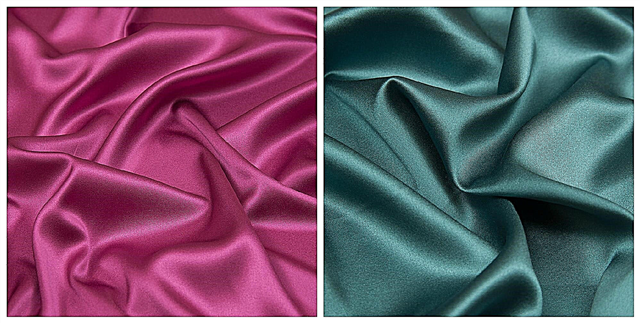If you are fond of embroidering ribbons, then you can prepare ribbons for your future masterpieces with your own hands.

For ribbons, you can use a flap of silk or other suitable fabric or, as in this case, an unnecessary scarf. You can immediately take the fabric of the desired color, but if you want to not only make, but also paint the ribbons yourself, then the best material is white or milky. You can also paint colored ribbons, while taking into account how colors will mix.
For dyeing, you can use a suitable dye for the fabric (consider the composition of the material), but you can also take watercolor if you are not going to wash the embroidery. It is watercolor (not gouache and not acrylic) that gives delicate pure colors and does not make the fabric stiffer. It should be borne in mind that after drying, tapes painted with watercolors may become less saturated than when they were wet.
DMC Étoile Mouline thread: thread overview and embroidery workshop
You will need:
- the cloth;
- scissors for fabric;
- If desired, a candle or lighter to strengthen the edges;
- plastic film, cover the work surface;
- paints;
- a bottle with a spray;
- containers for mixing paints;
- a brush.
How to decorate a dress with embroidered ribbons
Step 1: preparing tapes

Cut the tape to the desired width. You can make tapes on the weft: cut a flap across the edges and tear the fabric into strips. This method is suitable for not too dense material with a simple weave of threads.You can also make ribbons by cutting them along the oblique: this way they are more plastic and give beautiful effects when embroidering. It is also not necessary that the ribbons are perfectly even - however, if your idea for embroidery involves the use of even ribbons, you should try to make them like that.
The edges of the ribbons can be left unprocessed: in embroidery this can look charming and cute in its own way. But if you want the cut edges to not bloom, burn them with the flame of a candle or lighter.
Step 2: Staining

Cover the work surface with film. Lay out the ribbons that will be painted. Prepare the paints: mix with water according to the instructions, mix the colors. Paints should be in a liquid state to give smooth transitions to fabrics.
If you paint ribbons in different colors, work with each ribbon individually.

Dampen the tape well from the spray bottle. Apply paint to wet tape. If you want an even color, you can dilute the paint in containers and immerse the tape there. If you want color transitions from more to less saturated, use a brush.

Add other colors if desired. For example, the ribbon in the photo above is intended for embroidery of flower leaves, and a little yellow is added to the cold green here in places: the leaves will turn out to be more lively, more interesting. In general, the process of self-painting tapes is good because you can make just such materials for embroidery as you want.

If the instruction of your paint involves any other manipulations, do them.And tapes, painted with watercolors, simply leave to dry.

Photo and source: stitchfloral.blogspot.com
We embroider ribbons delicate delphinium
Embroidery ribbons for beginners: miniature with a flower
Making a velvet bag with embroidered ribbons



